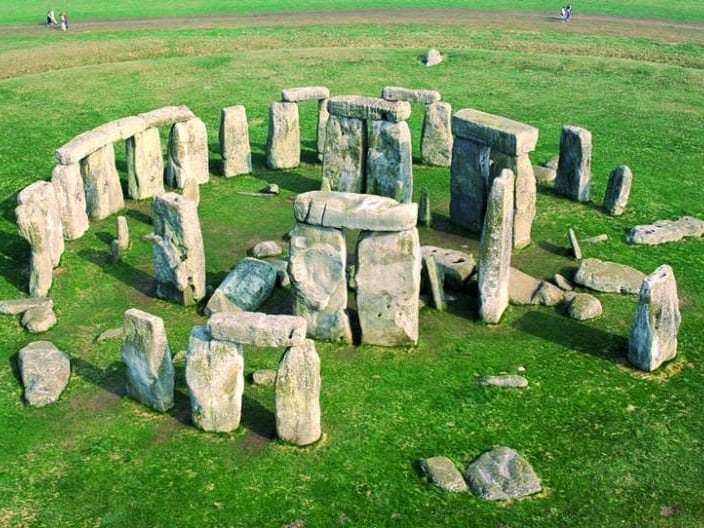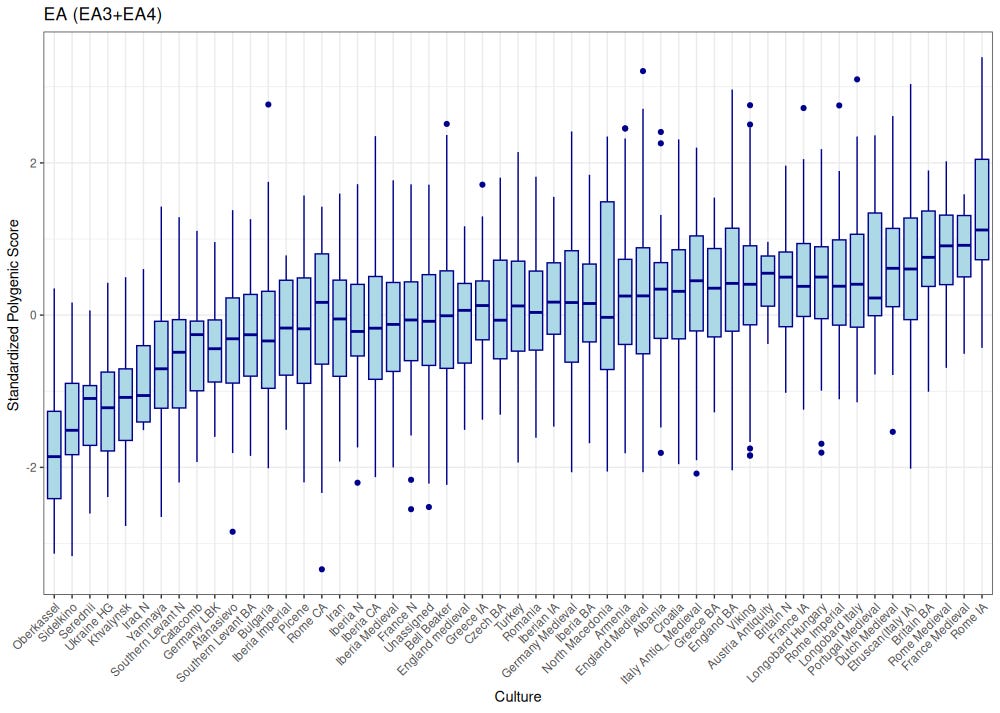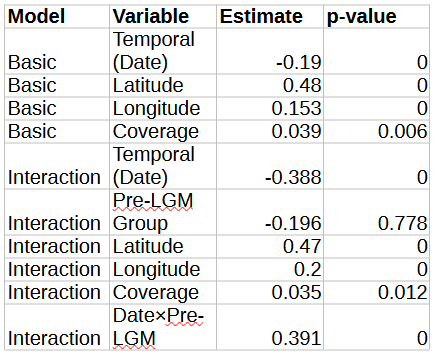Why Are We Taller Than Our Ancestors? Ancient DNA and Modern Science Explain
Height is nature and nurture written in bone. While genes set the blueprint, nutrition and living conditions determine whether we reach our full potential. My groundbreaking study of ~5,000 ancient genomes reveals how both factors shaped our stature across 12,000 years—with surprising lessons for modern health.
The Tallest Ancestors: Medieval Dutch, Vikings, and Bronze Age Steppe Pastoralists
Historical accounts describe Medieval Dutch and Vikings as exceptionally tall—and now DNA evidence backs this up. By calculating polygenic height scores (a genetic prediction of how tall someone could grow based on their DNA), I found these groups had the highest potential for height.
But they weren’t the first tall Europeans. Bronze Age herders from the Eurasian steppe (like the Yamnaya) also carried genetic variants for height, explaining why their skeletons often measure over 5'8"—remarkable for 5,000 years ago. Their genetic legacy spread across Europe, influencing later populations.
Key Insight: Genetic height likely peaked in Medieval times. The 20th-century height boom (e.g., Dutch men grew ~15 cm) mostly reflects better nutrition and healthcare—not DNA changes (Piffer & Kirkegaard, 2024).
The Shortest Farmers: Neolithic Europeans and the Cost of Agriculture
Genetic evidence confirms what skeletons have long shown - Europe's first farmers (Iberia_N, Britain_N, France_N) were markedly shorter than the hunter-gatherers they replaced. While archaeologists traditionally attributed this shrinkage to nutritional deficits from early agricultural diets, we now see a clear genetic component to this Neolithic height collapse.
Stonehenge's builders: Short in stature, long on smarts
Britain's Neolithic farmers carried genetic variants for shorter stature (low Height PGS), yet their monuments reveal advanced engineering skills—matched by higher educational attainment polygenic scores (EA PGS) than contemporary groups. A prehistoric paradox where intellectual stature outweighed physical height.
The contrast is stark when we examine their predecessors: Eastern European hunter-gatherers (Khvalynsk, Sidelkino, Ukraine HG) carried genetic variants for exceptional height, maintaining the tall stature typical of pre-agricultural Europeans.
The Trade-Off in Our Genes: How Farming Made Us Smarter But Shorter
Height and intelligence have followed opposing evolutionary paths - ancient DNA reveals our ancestors literally grew one at the expense of the other. While farmers gained cognitive advantages over hunter-gatherers, they paid an unexpected price in stature.
The Cognitive Leap of Early Farmers
Farming societies show a remarkable genetic trend:
Educational attainment polygenic scores (DNA predictors of cognitive traits) increased as farming spread
This matches archaeological evidence of:
Complex settlement structures
Advanced tool development
Early numerical systems
As the chart below shows, Hunter-Gatherers had the lowest Educational Attainment/Cognitive abilities PGS:
The irony? The same Neolithic revolution that boosted our ancestors' mental capabilities came with a cost - their skeletons shrank by about 4 inches on average.
Our scatterplot reveals a fascinating pattern - human heights remained relatively stable for millennia after the agricultural transition, with strong selection for increased height only emerging around 3,000 years ago. (An important caveat: earlier periods may be biased by overrepresentation of Southern European samples, who tend to be genetically shorter).
The genetic tide turned again when the Yamnaya - Bronze Age pastoralists from the steppe - swept across Europe. These nomadic herders delivered a double genetic payload: they reintroduced taller stature genes that had diminished during the farming revolution, while also carrying competitive educational attainment scores that maintained the cognitive gains of agricultural societies.
Regression Analysis: Time, Latitude, and the Legacy of Selection
A linear regression of height PGS against time, latitude, longitude, and coverage reveals key trends:
✅ Date (Years BP) has a negative coefficient (–0.190, p < 0.001) → Height increased over time (since older dates = further in the past).
✅ Latitude has a strong positive effect (0.480, p < 0.001) → Northern populations were genetically taller, fitting Bergmann’s rule (cold-adapted bodies tend to be larger).
✅ Pre-LGM samples (>19,000 BP) show a reversal → Early selection may have favored shorter stature in extreme Ice Age conditions.
Conclusion: The Genetic Legacy of Height
Human height isn’t just about diet—it’s deeply rooted in our DNA. From the tall Steppe herders and Vikings to the diminutive Neolithic farmers, ancient genomes reveal how natural selection, migration, and environment shaped our bodies across millennia.
One thing’s clear: if you’re tall, you might have a Bronze Age cowboy or a medieval Dutchman to thank!
Glossary for Non-Scientists
Polygenic score: A DNA-based "score" predicting traits like height, combining thousands of genetic variants.
Neolithic: The "New Stone Age" when farming began (~12,000 years ago).
Bergmann’s rule: An evolutionary trend where species in colder regions grow larger (e.g., polar bears vs. sun bears).
References
Piffer D, Kirkegaard EOW. Polygenic Selection and Environmental Influence on Adult Body Height: Genetic and Living Standard Contributions Across Diverse Populations. Twin Research and Human Genetics. 2024;27(6):265-282. doi:10.1017/thg.2024.43








Just a correction:
"Genetic evidence confirms what skeletons have long shown - Europe's first farmers (Iberia_N, Britain_N, France_N) were markedly shorter than the hunter-gatherers they replaced. "
Skeletons do not show this. While the Upper paleolithic Europeans were tall, the mesolithic Europeans (WHG) that Anatolian Neolithic farmers assimilated/replaced to form EEFs were quite short, and basically as short or slightly ,shorter than the neolithic farmers. The WHG admixed farmers such as the FBC and GAC also were not taller than the pure EEF populations. Eastern Eurodpean HGs retained a stature close to the upper paleolithic but these were not replaced by Anatolian neolithic farmers.
Any speculation on what drove the selection pressure for greater height and why this pressure is so uncommon globally?